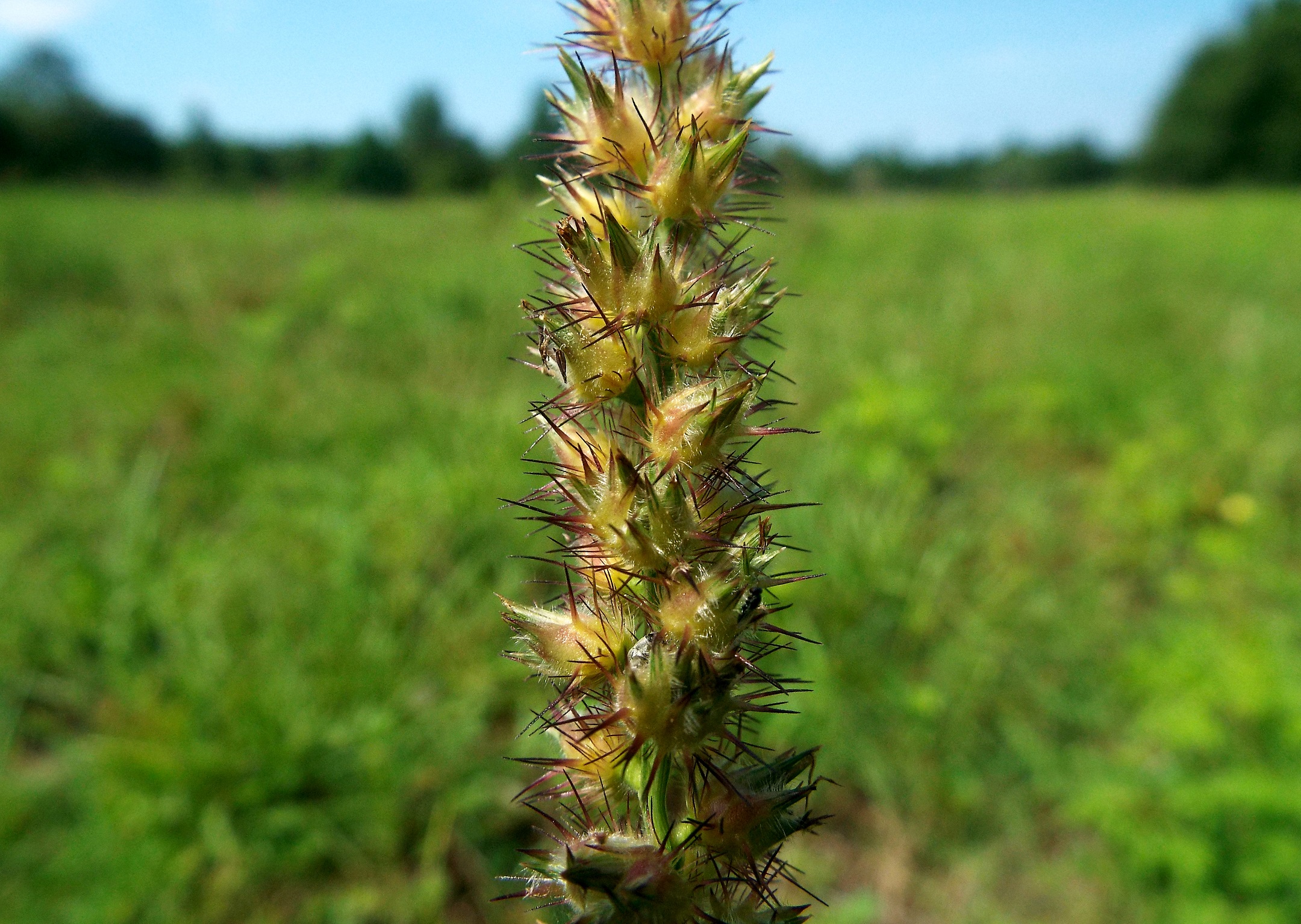
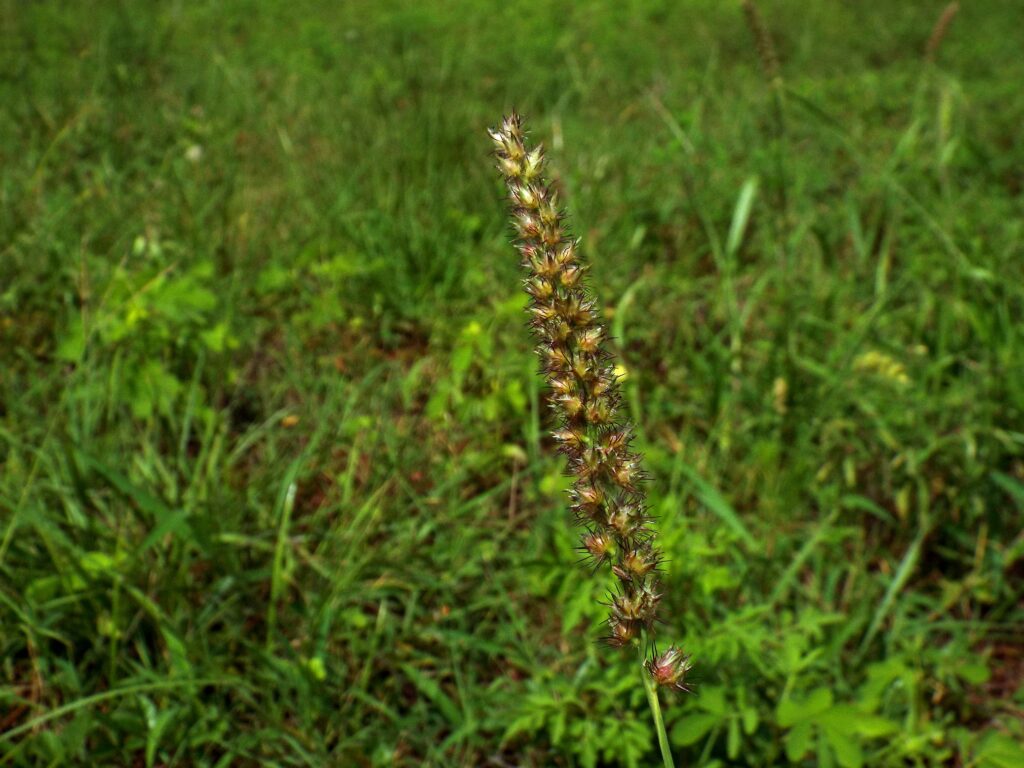
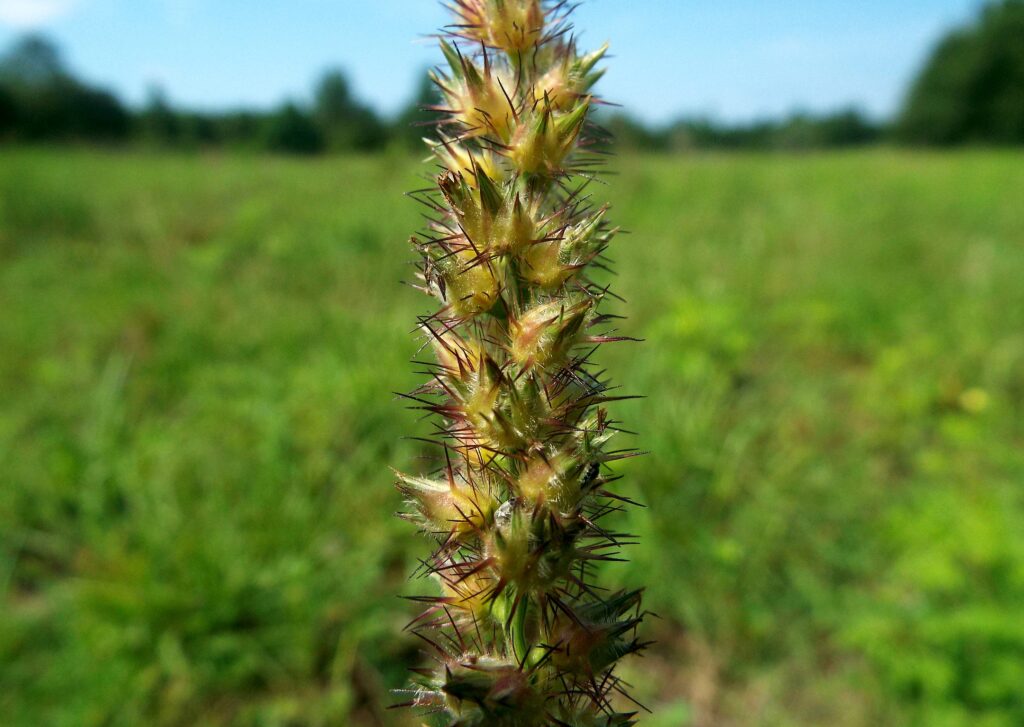
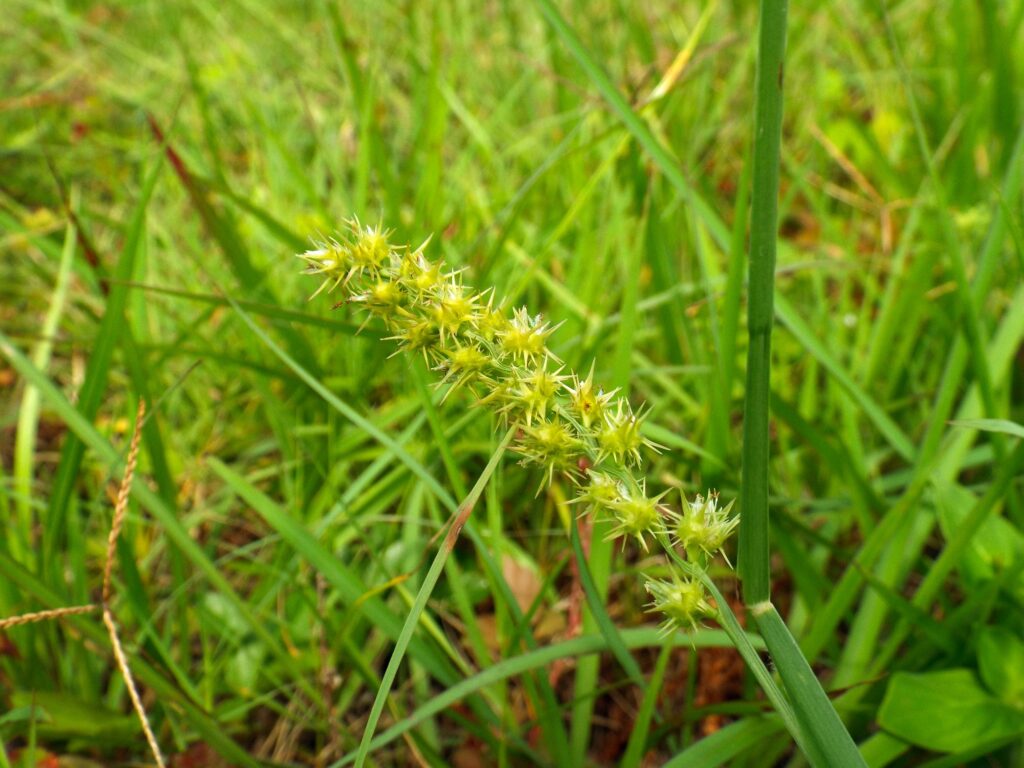
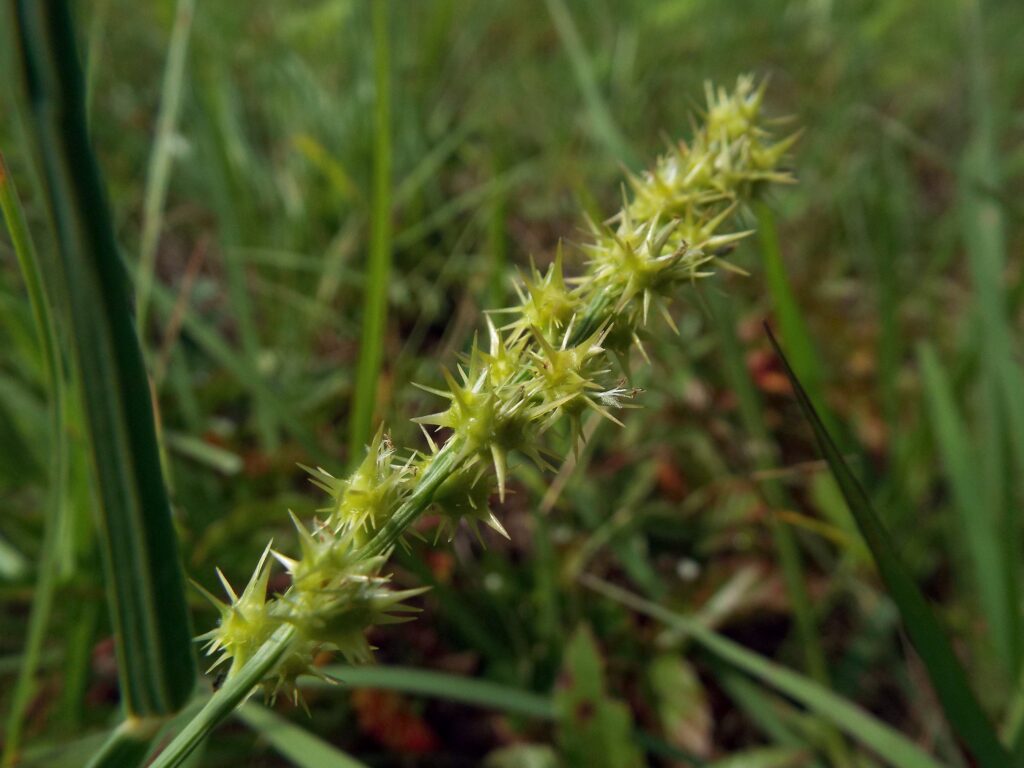
For today’s Flora and Fauna Friday we’re going to take a look at a type of plant that some of you may be more familiar with than you might like. We’re talking about the Sandburs, genus Cenchrus, also known as Sand Spurs or colloquially as “Stickers.”
There are four species of Sandburs native to our area: Southern Sandbur (Cenchrus echinatus), Long-spined Sandbur (Cenchrus longispinus), Dune Sandbur (Cenchrus tribuloides), and Coastal Sandbur (Cenchrus spinifex). I’ve placed those in order of least to most painful to step on.
The two species in my photos below are Southern Sandbur and Coastal Sandbur. The reddish one is Southern Sandbur. It’s our tallest member of the group and it has fairly delicate spines. The green one is Coastal Sandbur. The next tallest and the one with the most savage of spines. Coastal Sandbur is the species that grows in my yard and, let me tell you, they are not fun to step on. (They can go clean through a foam flip-flop.) Dune Sandburs are the ones you find (usually inadvertently) in and around the dunes of the beach. They’re low growing and not fun to step on either. Long-spined Sandburs are also a low growing species. I can’t attest to their spiny-ness, as I’ve never had the displeasure of stepping on one, but they don’t look they’d hurt too bad.
Sandburs are a member of the Grass family, Poaceae. Like all Grasses, they have a fruit that is, in simple terms, a seed surrounded by several types of specialized leaves, called bracts. In the case of Sandburs, some of those bracts have become highly specialized, fusing together and producing numerous spines. This specialized fruit gives Sandburs a huge advantage over other grasses. Those spines lodge into the fur and skin of passing animals that brush against or step on the plant. That animal is then forced to carry that seed away from the original plant, whether that be a few feet or several miles. When the seed is finally scratched, chewed, or brushed off the animal, with any luck, it will be in an area perfect for it to take root.
It seems like a straightforward idea to us as humans but it’s quite an ingenious strategy on multiple levels. Since they don’t have to rely on wind, gravity, or sheer numbers to disperse their seeds, Sandburs can spend more energy to make their seeds much larger than other Grasses. That gives their offspring a head start. Meaning they can get a more solid foothold in whatever habitat they end up in. Having big seeds also makes you a target for seed eating animals but those spines are pulling double duty. Very few animals will eat the seeds of Sandburs. It’s just not worth the pain and effort. Those spines have microscopic barbs and serrations across their entire surface, giving them a texture like a wood rasp. Invisible to the naked eye but easily felt in the mouth of a deer or in the sole of a barefoot beachgoer.
However, this strategy is not without its drawbacks. Sandburs require full sun in order to have enough energy to produce those big, spikey seeds. They also have to be low growing since they require mammals to disperse their seeds. Most mammals are fairly low to the ground, think Raccoons and Opossums. So if you want them to brush against your seeds, then you need to be the same height as your target mammal. Being lower growing also means the plants can spend less energy growing the stronger, thicker stems required to support the weight of those big seeds. Remember, plants can’t move so they need to outcompete their other plant neighbors for resources if they want to survive. So needing to be short while still having access to full sun is an extremely picky set of habitat requirements for a plant. Sandburs get around this by also being well adapted to dry, sandy soils that are nutrient and water limited. They’re also annuals for good measure. They’re very drought tolerant, so instead of trying to outcompete the other grasses, they’ve instead adapted to growing in the places that little else will grow. Like sand dunes, beaches, sandy grasslands, pastures, and old agricultural fields. Instead of persisting through the winter, they die off each year. Relying on the seeds they couldn’t disperse to sprout right back up in the same place. This means they can put all of their energy into seed production without having to worry about having enough stored in their roots to last through the winter.
The next time you’re barefoot on the beach and you get that sinking feeling in your soul as you feel that stabbing pain in your sole. Instead of cursing that Dune Sandbur’s very existence as you pick it out of your heel, take a minute and appreciate the ferocity of life in that small but savage plant. It’s very existence is that of extremes. It grows in a trying place that few are able to take hold in. With nothing but sand to support it and salt water to drink. Instead of withering it thrives. The animals that would eat this little plant for their own needs not only find themselves incapable of consuming it but become the very shepherds of its progeny. Ferrying the next generation of Sandburs to a distant dune. I like to say, “There’s a history behind every blade of grass. It’s just a matter of looking close enough to read it.” and that holds true for the Sandburs.